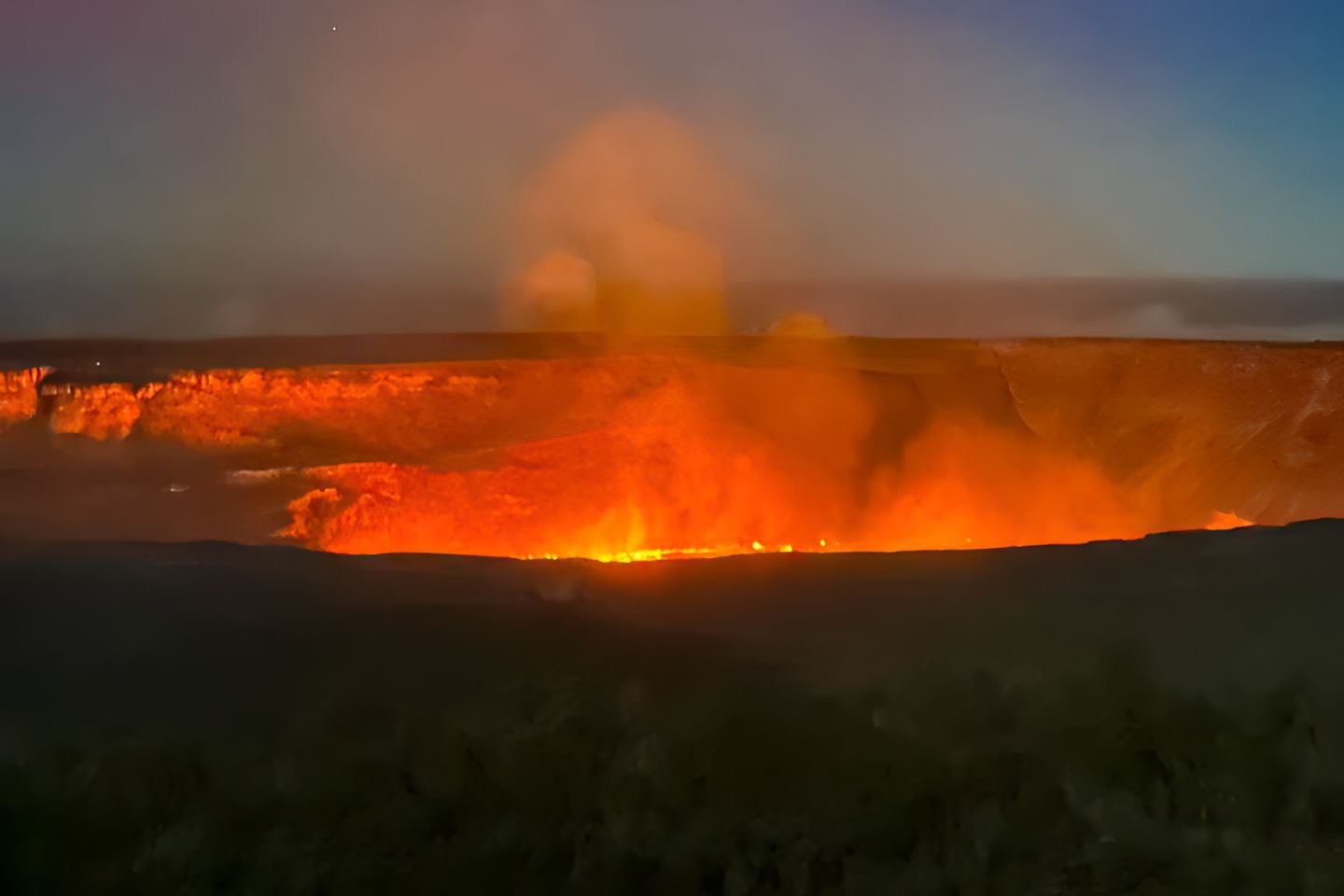Kilauea Volcano: The Most Active Volcano in Hawaii
By: Volcano Ohana | September 10th, 2023
When one thinks of Hawaii, images of pristine beaches, lush jungles, and crystal-clear waters often come to mind. However, this tropical paradise is also home to some of the most active volcanoes on Earth, with Kilauea taking the lead as the most prolific. Situated on the southeastern side of Hawaii’s Big Island, Kilauea has been shaping the landscape and captivating scientists and visitors alike for centuries. In this blog, we will explore the location, history, and significance of Kilauea Volcano, shedding light on the marvels and mysteries it holds. However, there’s no need to simply take our word for it; you can immerse yourself in Kilauea’s awe-inspiring beauty by joining us on our e-Bike Tour of Volcanoes National Park or renting a Fat Tire e-Bike for a personal experience.

Location and Geographical Setting
Kilauea Volcano is nestled within Hawaii Volcanoes National Park, which encompasses an astonishing 333,086 acres of land on the Big Island. This park is a UNESCO World Heritage site and is home not only to Kilauea but also to Mauna Loa, the world’s most massive shield volcano. The unique combination of these two volcanic giants has contributed to the island’s diverse and dynamic environment.
Kilauea is situated on the southeastern flank of Mauna Loa and is approximately 300,000 to 600,000 years old. It covers an area of about 14% of the Big Island’s total landmass, making it a significant geological feature in the Hawaiian archipelago.
Volcanic History
Kilauea is renowned for its long history of volcanic activity. The name “Kilauea” translates to “spewing” or “much spreading” in Hawaiian, an apt description of the volcano’s behavior. The volcano has been continuously erupting since January 3, 1983, in what is known as the Pu’u ‘O’o eruption. This makes Kilauea one of the world’s most active volcanoes.
However, its activity dates back far beyond the 1983 eruption. The volcano has had numerous historical eruptions, some of which have been relatively peaceful, while others have been highly destructive. One of the most significant eruptions in recent history occurred in 2018 when the lower East Rift Zone of Kilauea experienced a series of eruptions and lava flows, causing widespread damage to homes and infrastructure.



Significance and Impact
Kilauea’s significance extends beyond its status as a geological wonder. It holds cultural and scientific importance as well. For native Hawaiians, the volcano is regarded as a sacred place, with many myths and legends associated with it. The Hawaiian goddess Pele, responsible for volcanic activity, is said to reside within Kilauea.
From a scientific perspective, Kilauea offers invaluable insights into volcanic processes. Researchers study its eruptions to better understand magma behavior, volcanic hazards, and the evolution of the Hawaiian Islands. Its accessibility and frequent eruptions make it a natural laboratory for volcanologists from around the world.
Additionally, the unique landscapes created by Kilauea’s eruptions, including vast lava fields and the dramatic Halema’uma’u Crater, attract tourists who marvel at the volcanic spectacle. However, it’s essential for visitors to respect the park’s rules and guidelines to ensure their safety and protect this fragile environment. To enhance your experience and safely explore this volcanic wonder, we recommend joining our guided Fat Tire e-Bike Tours led by experienced expert guides. Come witness the fiery spectacle in person while taking advantage of our knowledgeable companionship.
In conclusion, Kilauea Volcano, situated on the Big Island of Hawaii, is a remarkable geological feature with a rich history of volcanic activity. Its continuous eruptions, cultural significance, and scientific importance make it a unique and captivating destination. As one of the most active volcanoes on Earth, Kilauea serves as a reminder of the dynamic forces shaping our planet and the beauty and power of nature.
Volcanoes National Park e-Bike Tour
- Fat Tire E-Bike for Each Person
- Length of Tour: 3 hours
- Ride Through Volcanoes National Park
- Water & Snacks Included
- Knowledgeable Guides
Volcanoes National Park e-Bike Rental
- Fat Tire E-Bike for Each Person
- Length of Rental Period: 3 hours
- Create Your Own Adventure
- Ride Through Volcanoes National Park





Recent Comments